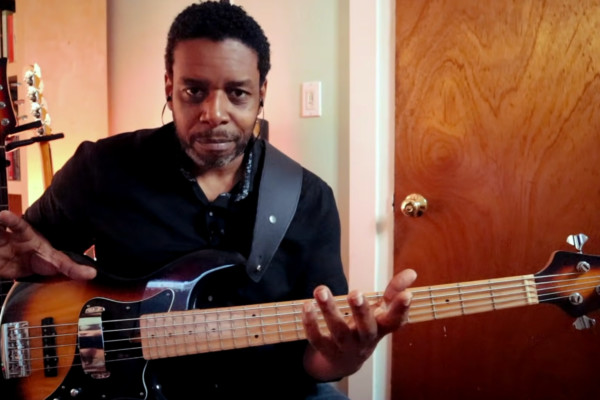Practice Technique: Note Isolation for Improved Intonation
There are countless ways to improve our intonation, both at our instrument and away from it. Here’s one strategy, to be done at our instrument, which can help open our ears and stabilize a key center. It involves isolating and spotlighting a single pitch every time it appears. The technique works well with music of any tempo.
You can isolate any note (provided it actually occurs in the piece you are playing) but one of the more forthright ways is to isolate the root, third or fifth of the key. This works well not only because there are likely to be many repetitions of these notes in the work, but also because they are seminal notes of the key center.
The technique is simple:
- Choose a note that appears in the passage. Play it in tune, and hear it clearly in your head. For our passage below, let’s choose the note Bb.
- Every time the note Bb appears, stop the pulse and play the note as if it had a long fermata above it. Do this for Bb‘s in all octaves. Hold the note for a few seconds. Make sure that the notes are exactly in tune with each other. Be as precise as possible. Adjust as necessary.
Let’s apply this technique to a specific example. Here’s our original passage:

Utilizing our technique, fix a Bb in your head. Then play the passage as if all the Bb’s have fermatas over them. For the double stops that include a Bb, play the upper note short, holding only the Bb. If we notated what we played, it would look something like this:

?
Be sure to play the fermatas longer, rather than shorter, even if your general tempo is fast. You want plenty of time to hear and adjust. Fully hear and feel the held notes. If you are using the bow, I would generally suggest two full bows per fermata. No matter how long you play the note, be excruciatingly exact.
Our first challenge in the above example occurs in bar four, since you need to match pitches in different octaves.

?
While this is not a superhuman ear training feat, it can be trickier than matching the unisons which occur previously.
Of course, every passage has it’s own unique challenges. Matching the Bb‘s in bars 8 and 15 is a bit more difficult than what we have had to do thus far.

The two Bb‘s in question occur in the same octave. However, more time elapses (and more notes are played) between them. The challenge, therefore, lies in keeping the pitch in your head with absolute exactness over a longer period of time.
Once you have fully implemented this note isolation technique, play the work at tempo (and without fermatas) while mentally isolating your chosen note and trying to match pitch exactly. See how accurate you can be. If you play a Bb inaccurately, adjust it quickly without changing tempo.
The concept of Note Isolation is simple and it is just one of many strategies we can use to solidify our intonation. It can, however, be very powerful. In addition to allowing for intensive focus on the pitch accuracy of a single note, it reinforces key center stability.
Dr. Donovan Stokes is on the faculty of Shenandoah University-Conservatory. Visit him online at www.donovanstokes.com and check out the Bass Coalition at www.basscoalition.com.



